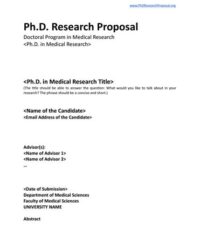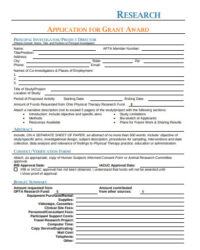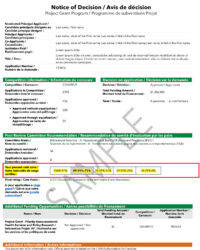Stepping into a Building Thinking Classrooms (BTC) environment feels different, doesn’t it? It’s a vibrant space where students are truly at the heart of the learning process, grappling with ideas, collaborating, and constructing their own understanding. Peter Liljedahl’s research has profoundly shifted how many educators approach teaching, moving away from direct instruction as the primary mode to fostering deep, authentic thinking. This methodology isn’t just about what students learn, but how they learn it, prioritizing productive struggle and active engagement.
Embracing this transformative approach requires a thoughtful shift in lesson planning. It’s not about abandoning structure, but rather about designing lessons that invite inquiry and collaboration from the outset. That’s where a clear and comprehensive building thinking classrooms lesson plan template becomes an invaluable tool, helping you translate the powerful BTC principles into actionable, day-to-day classroom experiences. It provides a roadmap for ensuring every lesson maximizes student thinking and participation.
Deconstructing the Elements of a Powerful Thinking Classroom Lesson Plan
Creating a truly effective lesson plan for a Building Thinking Classroom means rethinking the traditional template. Instead of focusing solely on content delivery and teacher-led activities, the emphasis shifts to designing an environment where student thinking is visible, valued, and actively developed. It’s about setting the stage for productive struggle, where students are engaged in solving problems, not just memorizing facts. Your template needs to prompt you to consider the “how” of thinking, not just the “what” of learning.
At its core, a BTC lesson plan is built around a robust “thinking task.” This isn’t just any problem; it’s typically a non-curricular, low-floor, high-ceiling task that invites exploration and multiple entry points, allowing all students to engage regardless of prior knowledge, while also offering pathways for deeper investigation. The task acts as the catalyst for the collaborative thinking process that unfolds.
Beyond the task itself, the logistics of the classroom setup are crucial and must be intentionally planned. This includes random grouping of students, which encourages diverse perspectives and minimizes social loafing, and the use of vertical non-permanent surfaces (VNPS) like whiteboards or windows, which promote visibility, collaboration, and a willingness to revise ideas. These structural elements are fundamental to fostering a dynamic thinking environment and should be explicitly accounted for in your lesson design.
Furthermore, a BTC lesson plan isn’t complete without considering the teacher’s role, which transforms from a primary lecturer to a facilitator, observer, and questioner. The plan should outline when and how the teacher will “notice” student thinking, provide timely hints (rather than answers), and guide the consolidation of learning without removing the opportunity for student discovery. The debriefing phase is particularly vital, as it allows students to collectively make sense of the concepts explored during the task.
Key Sections to Include in Your Template
- Learning Objective: Clearly articulate the thinking skill or conceptual understanding students should develop.
- Thinking Task: Detail the specific problem or prompt that will drive the lesson.
- Materials: List necessary supplies (VNPS, markers, specific manipulatives for the task).
- Group Formation Strategy: Specify how random groups will be formed (e.g., numbered cards, deck of cards).
- Teacher Actions: Outline key teacher moves – observations, questioning strategies, timing of hints, and when to step back.
- Student Actions: Describe expected student behaviors – collaboration, problem-solving, presenting ideas on VNPS.
- Consolidation/Debrief Strategy: Plan how the class will collectively synthesize learning and discuss different approaches.
- Assessment: Note observational checkpoints or specific questions to gauge understanding.
Beyond the Basics: Fostering Deeper Engagement
When crafting your template, consider incorporating prompts for “extensions” for groups that finish early, ensuring continuous productive struggle. Also, think about how you will capture and celebrate diverse approaches during the consolidation phase. This isn’t just about finding the “right” answer, but appreciating the journey of thinking. A well-designed building thinking classrooms lesson plan template will guide you through these layers, ensuring a holistic and engaging learning experience for all.
Practical Steps for Creating Your Building Thinking Classrooms Lesson Plan Template
Embarking on the journey of creating your own building thinking classrooms lesson plan template can feel like a significant undertaking, but it doesn’t have to be. Start simple, focusing on the core elements, and allow yourself to refine it over time based on your classroom experiences. Think of it less as a rigid form to fill out and more as a dynamic tool that evolves with your understanding of the BTC practices and your students’ needs. The beauty of BTC lies in its adaptability, and your planning document should reflect that flexibility.
When designing the layout, consider what information you need to see at a glance to effectively manage your thinking classroom. You’ll want to clearly delineate sections for the initial task, the group work phase, and the crucial consolidation. Visual cues and succinct prompts within the template can serve as valuable reminders for implementing specific BTC practices, such as when to observe without intervening or how to structure hints. A user-friendly template makes it easier to consistently apply the research-backed strategies.
Ultimately, the goal of your template is to streamline your preparation while maximizing the impact of your instruction. It helps ensure that you’ve thought through not just the content, but the environment, the interactions, and the opportunities for students to truly think.
- Identify the Core Thinking Objective: Shift from just “students will learn X” to “students will develop thinking skill Y by exploring X.”
- Select or Design a Compelling Problem: Choose a non-curricular problem that is accessible to all but allows for significant intellectual stretch.
- Allocate Time Realistically: Estimate time for the task introduction, group work, and the crucial consolidation phase.
- Plan for Student Grouping: Decide on a fair and random method for forming groups at the start of each lesson.
- Outline Teacher Moves: Script potential questions, anticipated misconceptions, and when to provide hints rather than direct answers.
- Consider Consolidation: Plan how different approaches will be shared and how key mathematical or conceptual insights will be explicitly discussed.
- Include a Reflection Section: Add a space for post-lesson notes on what worked well, what could be improved, and student insights.
Implementing the Building Thinking Classrooms framework can truly transform your teaching and your students’ learning experiences. A well-structured lesson plan template acts as your guide, helping you systematically integrate the 14 practices into your daily instruction. It provides the necessary scaffolding for you as the educator, ensuring that the innovative spirit of BTC is maintained in every lesson.
By intentionally planning for random grouping, vertical non-permanent surfaces, and rich thinking tasks, you create an environment where students are empowered to explore, discover, and truly own their learning. This thoughtful preparation, supported by a clear template, not only makes the teaching process smoother but also ensures that every moment in the classroom contributes to building a community of deep, engaged thinkers.


